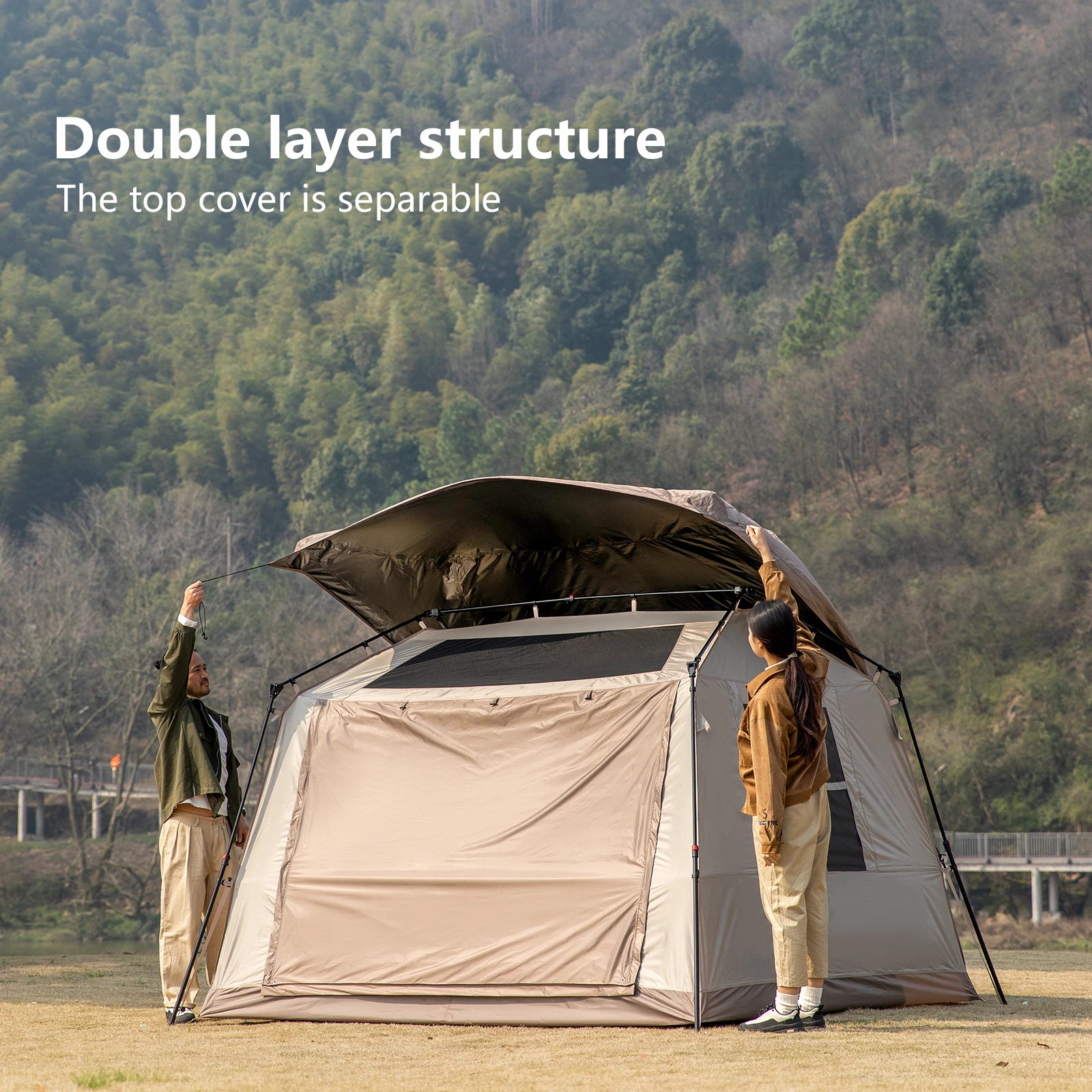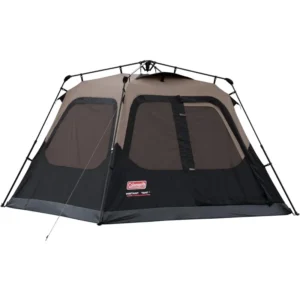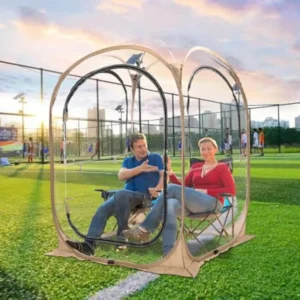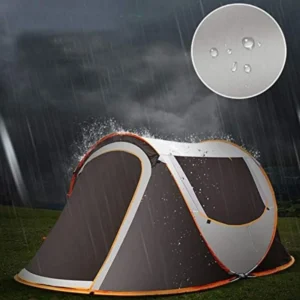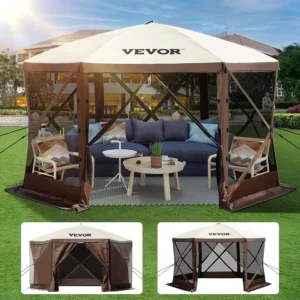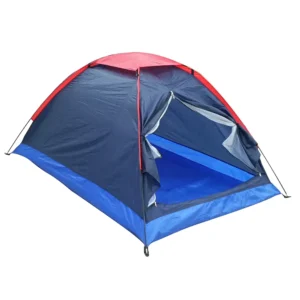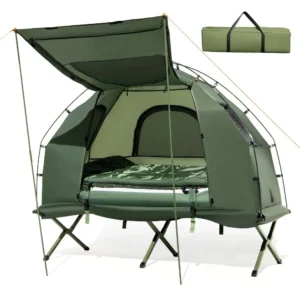What Are Fast Setup Tents? Understanding Quick-Pitch Camping Solutions
Camping adventures should begin with excitement, not frustration. Fast setup tents represent a revolution in outdoor accommodation, designed specifically to minimize setup time and maximize enjoyment of the great outdoors. These innovative shelters allow campers to transform a flat piece of ground into a comfortable haven in minutes—sometimes even seconds—rather than struggling with complex pole assemblies and confusing instructions.
The evolution of tent technology has been driven largely by the demand for convenience without sacrificing reliability. Traditional tents often required 15-30 minutes of sorting poles, threading sleeves, and securing guy lines. In contrast, modern fast setup tents can be fully erected in just 1-5 minutes, representing a dramatic improvement in camping efficiency.
The appeal of these quick-pitch solutions extends across the camping community—from families with restless children to solo adventurers arriving at dusk, and from festival-goers needing instant shelter to weekend warriors with limited vacation time. Understanding the various options for quick-setup tents has become essential knowledge for modern campers seeking to maximize their outdoor experiences.
As we explore the world of fast setup tents, we’ll examine the different types available, their unique advantages, practical considerations for choosing the right one, and expert tips to ensure your camping experience begins with ease rather than effort.
The Three Main Types of Fast Setup Tents Explained
When exploring fast setup tent options, you’ll encounter three distinct categories, each offering unique approaches to solving the quick-pitch challenge:
- Instant Tents: Feature pre-attached or hub-based pole systems that unfold and lock into place
- Pop-Up Tents: Utilize spring-loaded frames that automatically deploy when unpacked
- Inflatable Tents: Replace traditional poles with air beams that inflate to create the tent structure
Each type addresses the need for speed differently, with setup times ranging from less than 60 seconds for pop-up designs to about 5-10 minutes for inflatable models. Price points also vary significantly across categories, with pop-ups typically being most affordable and inflatable designs commanding premium prices.
Understanding the benefits of pop-up camping tents and other fast setup options allows you to match the technology to your specific camping needs, whether prioritizing absolute speed, weather resistance, or interior comfort.
Instant Tents: Pre-Attached Pole Systems for Rapid Deployment
Instant tents represent perhaps the most practical balance of speed, stability, and durability in the fast setup category. Their defining feature is an integrated frame system where poles remain permanently attached to the tent fabric. This design eliminates the time-consuming process of sorting and threading poles through sleeves.
The setup process typically involves just three simple steps:
1. Unpack and unfold the tent on your chosen site
2. Extend the pre-attached poles until they click and lock into place
3. Secure the tent using stakes and guy lines for stability
Most instant tents can be fully erected in 1-3 minutes by a single person, making them remarkably efficient compared to traditional designs. The pole systems typically utilize telescoping legs and hub connectors that create a sturdy frame when extended.
Weather resistance in quality instant camping tents can be excellent, with many models featuring full-coverage rainflies and sealed seams. They’re available in a wide range of sizes, from intimate 2-person designs to spacious 8-10 person family models with room dividers.
The technology behind instant tents has advanced significantly, with manufacturers like Coleman, Core Equipment, and Explore Elements developing proprietary hub systems that enhance both setup speed and structural integrity. Learning how to pitch instant tents properly ensures you’ll maximize their benefits while extending their lifespan.
Advantages and Limitations of Instant Tents
Advantages:
* Superior stability compared to pop-up designs
* Excellent weather resistance capabilities
* Wide range of sizes available (1-10 person options)
* Intuitive setup requiring minimal instruction
* Better headroom and livable space than many traditional tents
Limitations:
* Heavier than traditional pole tents (typically 8-25 pounds)
* Larger packed size due to integrated frame system
* Higher price point than basic traditional tents
* Potential for mechanism failure if not handled carefully
* Can be challenging to repair in the field if hub system breaks
Instant tents excel in situations where you need a balance of speed and durability, such as car camping, family outings, and established campgrounds. They’re ideal for campers who prioritize convenience but still need dependable protection from the elements during multi-day trips.
Pop-Up Tents: Spring-Loaded Designs for Instant Shelter
Pop-up tents represent the fastest deployment option in the camping world, utilizing pre-tensioned spring structures that literally “pop” into shape when released from their carrying case. These tents employ flexible fiberglass or steel coils integrated into the tent fabric, creating a self-deploying structure that requires virtually no assembly.
The setup process couldn’t be simpler:
1. Remove the tent from its circular carrying case
2. Toss it into the air or place it on the ground
3. Watch as it instantly springs into its fully formed shape
4. Stake down for stability
This remarkable design allows for setup times measured in seconds rather than minutes. Most pop-up tents fully deploy in 1-5 seconds, making them the undisputed champions of speed and simplicity.
Pop-up models are typically designed for 1-3 occupants, making 2-person pop-up tents particularly popular for couples, festival-goers, and casual campers. They generally weigh between 3-8 pounds and fold into compact circular carrying cases ranging from 24-36 inches in diameter.
The true challenge with pop-up tents comes when breaking camp. The folding technique requires practice to master, as you must compress and twist the spring-loaded structure back into its compact carrying form—a process that can be counterintuitive until learned.
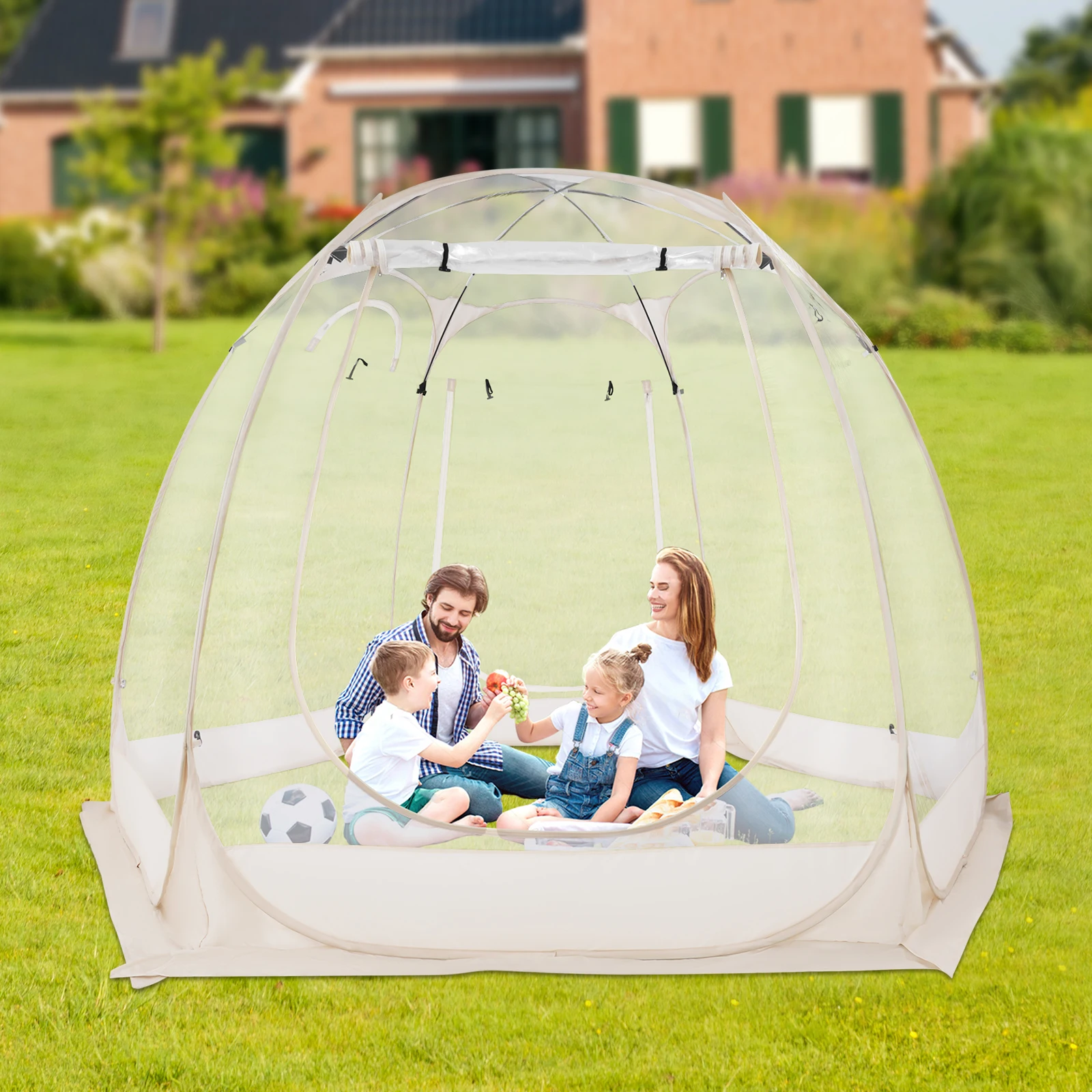
Advantages and Limitations of Pop-Up Tents
Advantages:
* Unmatched setup speed (seconds rather than minutes)
* Extremely user-friendly with no assembly required
* Lightweight and portable design
* Most affordable fast setup option
* Perfect for spontaneous or short-term use
Limitations:
* Challenging to fold back into carrying position
* Limited size options (mostly 1-3 person capacity)
* Less weather resistance than other designs
* More vulnerable to wind damage
* Shorter lifespan due to spring mechanism wear
Pop-up tents shine in scenarios where absolute speed and simplicity are priorities: music festivals, beach days, kids’ backyard adventures, and overnight camping in fair weather. They’re also excellent for campers who find traditional tent assembly daunting or those with physical limitations that make conventional setup challenging.
For those concerned about durability in changing weather conditions, specialized waterproof pop-up tent options offer enhanced rain protection while maintaining the convenience of instant deployment.
Inflatable Tents: Air Beam Technology for Effortless Assembly
Inflatable tents represent the premium end of the fast setup spectrum, replacing traditional rigid poles with air-filled beams (sometimes called air poles). This innovative design uses tubular chambers that, when inflated, create a remarkably stable structure without the complexity of conventional pole systems.
The setup process involves:
1. Unroll the tent on your chosen site
2. Connect the inflation valve to a pump (manual or electric)
3. Inflate the air beams to the recommended pressure (typically 7-9 PSI)
4. Stake down and secure guy lines
While not as instantaneous as pop-up designs, inflatable tents still offer impressive efficiency, with most models ready for occupancy in 5-10 minutes. The inflation process itself generally takes just 1-3 minutes with an efficient pump.
What truly distinguishes inflatable tents is their exceptional stability and comfort. The air beams create robust, flexible support that adapts to wind conditions rather than fighting against them. This technology also allows for more creative and spacious interior designs, with many inflatable models offering standing height throughout and multiple rooms.
Understanding the essential features of quick-setup tents becomes particularly important when considering inflatable models, as their higher price point warrants careful attention to design details and construction quality.
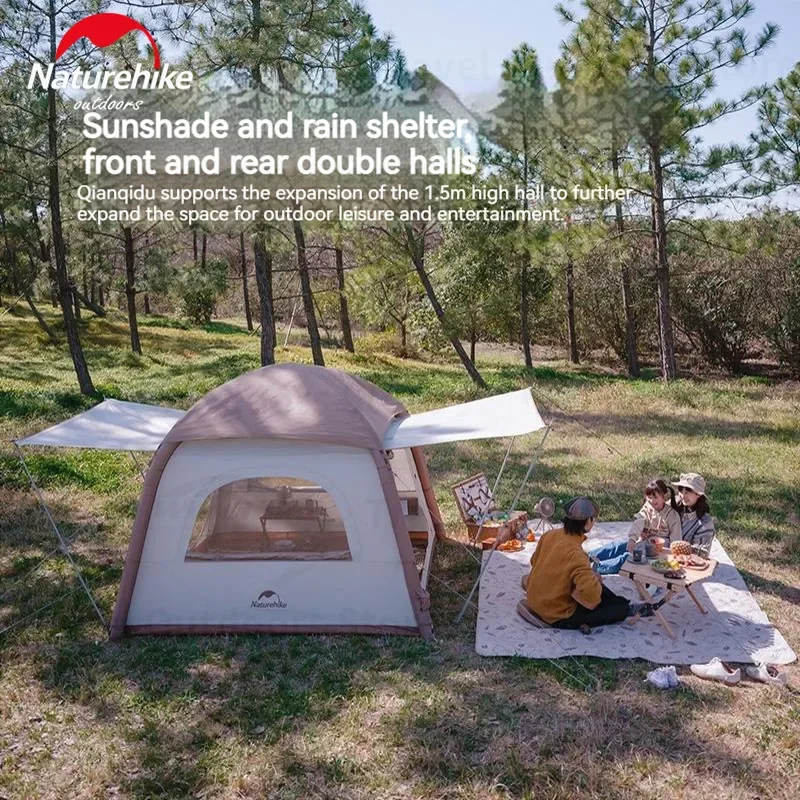
Advantages and Limitations of Inflatable Tents
Advantages:
* Superior wind stability due to flexible air beam structure
* Exceptional interior space and headroom
* No risk of pole breakage during setup or storms
* Excellent comfort and livability for extended stays
* Simple repair process (similar to fixing a bike tire)
Limitations:
* Requires a pump (dependency on equipment)
* Risk of punctures or valve leakage
* Heavier than traditional pole tents
* Significant price premium over other designs
* Longer deflation and packing time
Inflatable tents excel in situations where comfort, livable space, and weather performance are priorities alongside setup convenience. They’re ideal for family camping trips, longer stays at a single location, or camping in areas with variable weather conditions. The comfort and stability they provide make them worth considering despite the higher investment for serious campers who value both convenience and comfort.
Essential Features to Consider When Choosing a Fast Setup Tent
When evaluating fast setup tents, looking beyond the “quick-pitch” marketing claims helps ensure you select a shelter that truly meets your needs. Here are the critical features that distinguish quality options:
Setup Reality Check
Verify actual setup times through independent reviews rather than relying solely on manufacturer claims. Many tents advertised as “60-second setup” may take 2-3 minutes in real-world conditions, especially for first-time users.
Capacity vs. Comfort
Tent capacity ratings refer to maximum occupancy with sleeping bags placed edge to edge. For comfortable camping, consider selecting a tent rated for 1-2 people more than your actual group size. A 4-person tent typically offers comfortable space for 2-3 people with gear.
Weather Protection
Look for waterproof ratings (hydrostatic head) of at least 1500mm for the rainfly and 3000mm for the floor. Quality tents should feature fully-taped seams, adequate rainfly coverage, and robust waterproofing treatments to ensure protection during sudden downpours.
Ventilation Design
Even rapid setup shelters need proper airflow to prevent condensation. Seek models with multiple mesh panels, ground vents, and adjustable door/window configurations that allow air circulation while maintaining weather protection.
Material Quality
For fast setup tents, material durability becomes especially important as the mechanisms place different stresses on the fabric. Look for:
– Floor material: 110-150 denier or higher
– Wall fabric: 68-75 denier for good durability
– Poles/frames: Aluminum or fiberglass composite for instant tents; TPU or high-grade PVC for inflatable beams
Finding the right balance of features in easy-setup camping tents ensures your quick-pitch shelter will perform reliably across various conditions. Understanding weather resistance in fast-pitch tents helps you select a model appropriate for your typical camping environment.
Comparing Fast Setup Tent Performance: Which Type Excels Where?
When evaluating which fast setup tent best matches your needs, consider how each type performs across these essential metrics:
| Performance Factor | Instant Tents | Pop-Up Tents | Inflatable Tents |
|---|---|---|---|
| Setup Speed | 1-3 minutes | 5-10 seconds | 5-10 minutes |
| Weather Resistance | 4/5 | 2/5 | 5/5 |
| Wind Stability | 4/5 | 2/5 | 5/5 |
| Portability | 3/5 | 4/5 | 2/5 |
| Durability | 4/5 | 2/5 | 4/5 |
| Interior Space | 3/5 | 2/5 | 5/5 |
| Average Cost | $$$$ | $$ | $$$$$ |
Best For Specific Scenarios:
Instant tents excel in balanced performance, making them ideal for regular campers who need reliability and speed without extreme weight concerns. Their versatility makes them suitable for most standard camping situations.
Pop-up tents shine in scenarios requiring absolute simplicity and ultra-fast deployment, such as festival camping, kids’ backyard adventures, or beach days where speed trumps durability concerns.
Inflatable tents dominate when comfort and weather performance matter alongside setup convenience. They’re perfect for family camping, extended stays, and situations where superior livability justifies the higher investment.
Understanding what makes a quick-pitch tent different from traditional designs helps clarify which performance factors should guide your selection process.
Top Fast Setup Tent Recommendations for Different Camping Styles
After extensive field testing across various conditions, these fast setup tents stand out for specific camping needs:
Best Overall Fast Setup Tent
The Core 9-Person Instant Cabin Tent offers an exceptional balance of speed and livability. With a 60-second setup time for a spacious 14’ x 9’ interior, this tent features room dividers, multiple doors, and excellent ventilation while maintaining reasonable weather protection.
Best for Families and Groups
For family camping, inflatable tunnel tents provide unmatched livable space with surprisingly quick setup. Models featuring separate sleeping compartments and a central living area offer privacy while maintaining the quick-pitch benefits of air beam technology.
Best Lightweight Option
Compact instant tents weighing under 6 pounds deliver remarkable speed without excessive pack weight. These models compress to backpack-friendly dimensions while still setting up in under 2 minutes—perfect for hikers who prioritize efficiency at camp.
Best for Extreme Weather
Advanced inflatable geodesic designs offer superior storm resistance with the convenience of air beam setup. Their multi-point inflation systems create stable structures capable of withstanding significant wind and rain while still setting up in under 10 minutes.
Best Budget-Friendly Choice
Quality pop-up tents provide the fastest setup at the most accessible price points. While limited in size and weather resistance, they offer unbeatable convenience for casual campers prioritizing simplicity over performance.
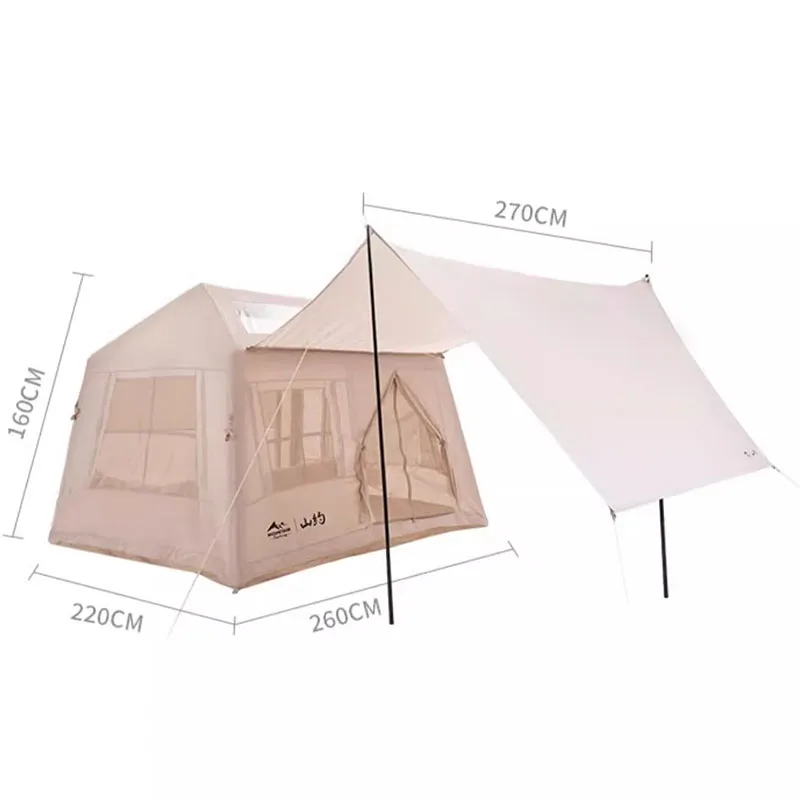
For those seeking more detailed guidance, our quick assembly tents guide provides comprehensive recommendations based on specific camping scenarios and priorities.
Easy Setup Camping Tent, Instant Camping Tent
Instant Cabin Tent Double Layer Canvas 1-Minute Setup Spacious Family Camping Shelter with Air Vents$308.10 Select options This product has multiple variants. The options may be chosen on the product pagePop Up Dome Tent, Waterproof Pop Up Tent
$218.89 Select options This product has multiple variants. The options may be chosen on the product page- $633.01 Select options This product has multiple variants. The options may be chosen on the product page
Easy Setup Camping Tent, Trekking Pole Backpacking Tent
$142.40 Select options This product has multiple variants. The options may be chosen on the product pageEasy Setup Camping Tent, Waterproof Camping Tent
All-in-One Elevated 1-Person Camping Tent Cot with Integrated Sleeping System for Outdoor Adventures$535.16 Select options This product has multiple variants. The options may be chosen on the product page
Expert Tips for Getting the Most from Your Fast Setup Tent
Practice Before Your Trip
Even “instant” tents benefit from a practice setup at home. This familiarizes you with the mechanism, confirms all parts work correctly, and builds confidence for when you’re setting up in less ideal conditions at your destination.Select Your Site Strategically
Fast setup tents still require appropriate terrain. Look for level ground clear of sharp objects, position your tent entrance away from prevailing winds, and avoid low spots where water might collect during rainfall.Use All Stake Points and Guy Lines
Many campers skip proper staking with fast setup tents, assuming the self-supporting structure is sufficient. Always use all provided stake points and guy lines, especially with instant and inflatable designs, to prevent wind damage.Mind the Mechanism
Each fast setup type has vulnerable components: hinges and hubs on instant tents, spring coils in pop-ups, and valves/beams in inflatables. Handle these with care, keep them clean, and inspect regularly for early signs of wear.Store Properly Between Trips
Never store any tent while damp, but this is especially crucial for fast setup models where mechanisms can corrode or fabric can mildew around complex joints. Ensure complete drying before packing away your stress-free pitch perfect tent.Carry Appropriate Repair Supplies
Pack mechanism-specific repair items: replacement shock cord and hub connectors for instant tents, repair tape for pop-up tent spring sleeves, and patch kits with adhesive for inflatable beam punctures.
Are Fast Setup Tents Worth the Investment? An Honest Assessment
Fast setup tents typically command a 20-40% price premium over comparable traditional designs, raising legitimate questions about their value proposition. The assessment ultimately comes down to how much you value time and convenience at camp.
For weekend warriors with limited vacation time, the ability to set up camp in minutes rather than half an hour represents significant value, allowing more time for hiking, fishing, or simply relaxing. Similarly, families with children find the reduced setup stress well worth the additional cost.
In terms of durability, quality fast setup tents can last nearly as long as traditional models when properly maintained. The primary vulnerability is in their mechanisms—hub systems, coiled springs, or inflation valves—which may fail before the fabric wears out. However, many manufacturers now offer replacement parts for these components.
Weather performance varies significantly between types, with inflatable and quality instant tents offering protection comparable to traditional designs, while pop-ups generally sacrifice weather resistance for speed.
The consensus among most campers is that fast setup tents deliver genuine value when the specific type is matched appropriately to your camping style and environment. The convenience benefit is tangible and significant, particularly for frequent campers.
How to Properly Care for and Maintain Your Fast Setup Tent
Proper maintenance significantly extends the life of fast setup tents and ensures their mechanisms continue functioning smoothly:
Clean with Appropriate Methods
Use lukewarm water and mild soap for spot cleaning, avoiding harsh detergents that can damage waterproof coatings. Never machine wash any tent regardless of setup type.Dry Completely Before Storage
Set up your tent in a shaded, well-ventilated area to dry completely after use, paying special attention to corners and mechanism areas where moisture can hide.Mechanism Maintenance
– For instant tents: periodically lubricate hinges and hub joints with silicone spray
– For pop-up tents: inspect spring sleeves for wear and keep free of dirt
– For inflatable tents: clean valves after use and store partially inflated if possibleStore in Moderate Conditions
Keep tents in climate-controlled environments between 40-80°F (4-27°C) when possible. Avoid attics, garages, or basements with temperature extremes or humidity.Regular Inspection Routine
Before each season, thoroughly check seams, mechanism components, and fabric for signs of wear. Address minor issues immediately before they become major problems.
Frequently Asked Questions About Fast Setup Tents
Can one person really set up these tents alone?
Yes, all three fast setup tent types are designed for single-person setup. Pop-up tents require virtually no assembly, instant tents typically take one person 1-3 minutes, and inflatable tents can be managed alone with an efficient pump.
How do fast setup tents perform in heavy rain and wind?
Performance varies by type. Quality instant tents can withstand winds of 30-35 mph and heavy rainfall when properly staked. Inflatable tents often perform even better, handling winds up to 40-50 mph due to their flexible structure. Pop-up tents are generally limited to light wind (under 15-20 mph) and moderate rainfall.
What’s the most challenging aspect of using pop-up tents?
The folding and packing process is consistently cited as the most difficult aspect of pop-up tent use. The technique for collapsing the spring-loaded structure into its compact carrying size requires practice and can be frustrating for beginners.
Are fast setup tents suitable for backpacking?
Most instant and inflatable tents are too heavy for traditional backpacking. However, some compact pop-up and lightweight instant tents weighing under 5-6 pounds can work for short backpacking trips where setup convenience is prioritized over minimum weight.
How long should a quality fast setup tent last with proper care?
With good maintenance, expect 5-7 years from quality instant and inflatable tents used regularly, and 2-4 years from pop-up designs. Weekend-only use can extend these timeframes significantly.
Are replacement parts available for fast setup tent mechanisms?
Major manufacturers typically offer replacement parts for instant tent hubs and poles, and repair kits for inflatable beams. Pop-up tent spring mechanisms are generally not repairable if they break, though fabric tears can often be patched.
Can fast setup tents be used in winter conditions?
Most fast setup tents are designed for 3-season use. Some premium instant and inflatable models can handle light snow loads, but specialized winter tents (which typically take longer to set up) are recommended for true winter camping.
Making the Right Fast Setup Tent Choice for Your Outdoor Adventures
The ideal fast setup tent aligns closely with your specific camping style, frequency, and environmental conditions. After exploring the three main types—instant, pop-up, and inflatable—you can make an informed decision based on your priorities.
For weekend car camping and family outings where you’ll set up a basecamp for several days, instant tents offer the best balance of speed, weather protection, and livable space. Those prioritizing absolute simplicity and lightning-fast setup for overnight stays or fair-weather camping will appreciate pop-up designs. When comfort and weather performance matter alongside setup convenience, especially for longer trips, inflatable tents justify their premium price.
Remember that quality matters significantly in the fast setup category. A well-made tent with reliable mechanisms will provide years of trouble-free use, while budget options with poorly constructed quick-pitch systems may fail prematurely. Focus on reputable brands with proven track records in fast setup technology.
The right choice ultimately enhances what matters most—your enjoyment of the outdoors. A tent that pitches quickly and reliably allows you to focus on the experiences that make camping special, from sunset hikes to stargazing, without the frustration of complex setup processes eating into your valuable outdoor time.

